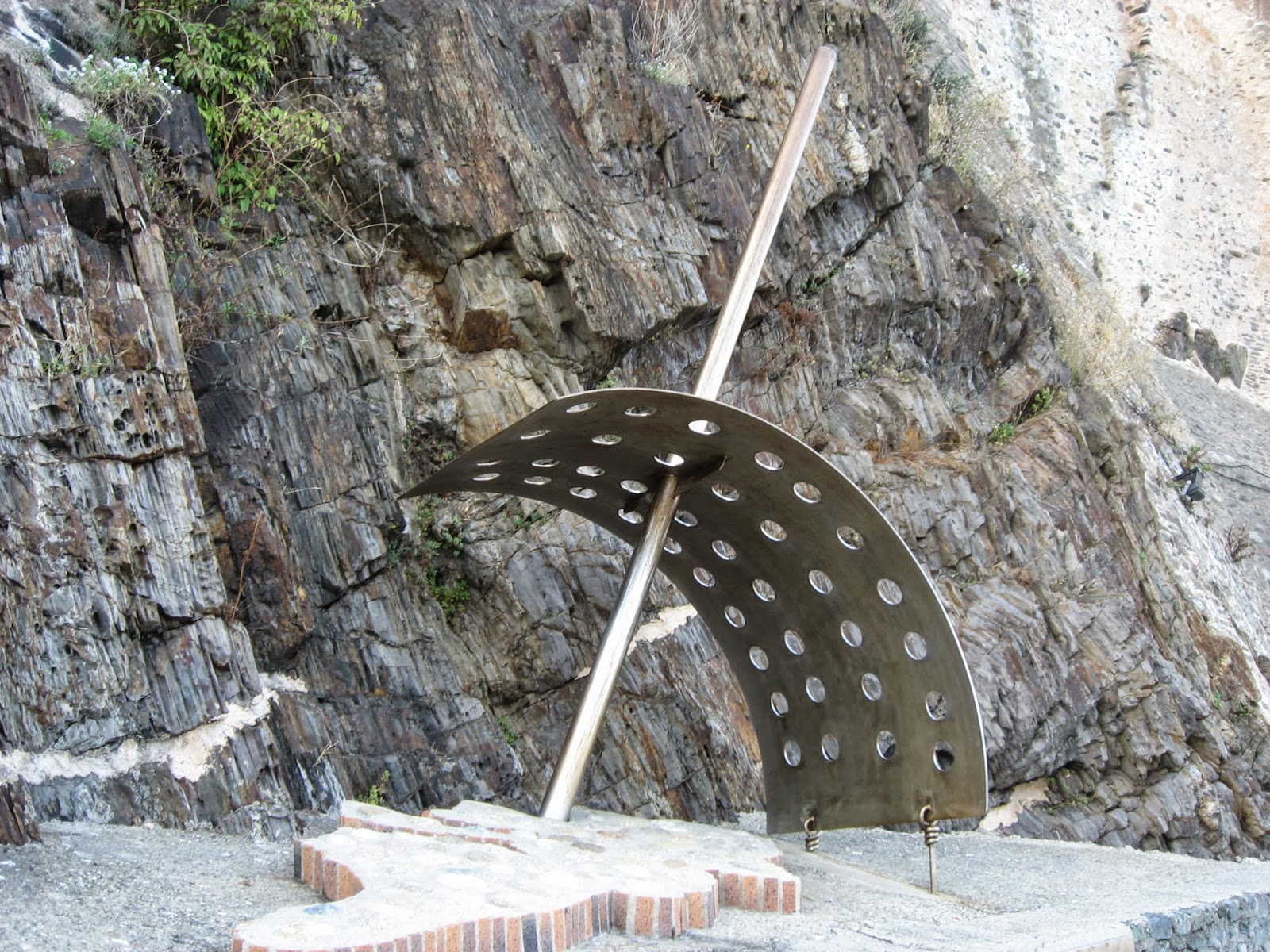What we did have time to see were the mountains. The beautiful Pyrénées are a spectacular border between France and Spain. The autoroute connecting the two countries is wide, multi-laned, and easily accommodates the constant file of transport trucks carrying all those goods across to the EU buyers.
The town of Collioure has a strong Catalan culture, so all signage carries French and Catalan spelling. Collioure and Cotliure are the same amazing town that takes your breath away as you arrive on the corniche and descend into this tourist hub, framed by the Mediterranean.
 In the early 20th century Collioure became a center of artistic activity, with several Fauve artists making it their meeting place. André Derain, Georges Braque, Othon Friesz, Henri Matisse, Pablo Picasso, Charles Rennie Mackintosh, James Dickson Innes and Tsuguharu Fujita have all been inspired by Collioure's royal castle, medieval streets, its lighthouse converted into the church of Notre-Dame-des-Anges and its typical Mediterranean bay. Ninety-eight reproductions of Matisse’s and Derain’s works are exposed exactly where these two masters of Fauvism painted the originals.
In the early 20th century Collioure became a center of artistic activity, with several Fauve artists making it their meeting place. André Derain, Georges Braque, Othon Friesz, Henri Matisse, Pablo Picasso, Charles Rennie Mackintosh, James Dickson Innes and Tsuguharu Fujita have all been inspired by Collioure's royal castle, medieval streets, its lighthouse converted into the church of Notre-Dame-des-Anges and its typical Mediterranean bay. Ninety-eight reproductions of Matisse’s and Derain’s works are exposed exactly where these two masters of Fauvism painted the originals.
The Église Notre-Dame-des-Anges on Collioure's quayside was rebuilt in the 17th century to replace the church which was destroyed by Vauban. A former lighthouse was incorporated as a belltower. Inside the church are no fewer than five Baroque altarpieces by Joseph Sunyer and other Catalan masters of the genre.
 |
| Church of Notre-Dame-des-Anges |
 |
| Inside Notre-Dame-des-Anges |
Oops! Thought these frames found around town were for us to pose for a picture, but it turns out to be the exact perspective that the Masters took to paint. I'm just on the wrong side of the frame!
 |
| Like this perspective. |
 |
| And this. |
An example of a more contemporary work of art.
Collioure's cemetery contains the tomb of Spanish poet Antonio Machado, who fled here to escape advancing Francoist troops at the end of the Spanish Civil War in 1939.
The British historical novelist Patrick O'Brian lived in the town from 1949 until his death in 2000, and his novel The Catalans graphically describes Collioure life before major changes took place. He also wrote a biography of Picasso, who was an acquaintance. O'Brian and his wife Mary are also buried in the town cemetery.
Three sheltered beaches, both pebble and sand, nestle around the harbour, dominated by the bulk of the Château Royal, which forms part of the harbour wall. It was first built by the Knights Templar in the 13th century, and Collioure became the main port of entry for Perpignan, remaining under the rule of Spanish Aragon until France took over in 1659. The outer fortifications were reinforced ten years later by Vauban, who demolished much of the original town in the process.
There is a record of the castle at "Castrum Caucoliberi" having been mentioned as early as 673, indicating that the settlement here was of strategic and commercial importance during the Visigoth ascendancy.
Because of its highly strategic importance, Collioure has been under siege, and transferred from Spanish to French hands, several times over its history.
 Boules. Pétanque. Both refer to a game which must be one of France's favourite pastimes. The Italians refer to it as bocce, but I don't know if the rules vary. There are boules courts in small villages, and boulodromes in larger towns. Young and old are involved, enjoying the fresh air and vying for best player titles. Collioure seems to have seasoned, die-hard players.
Boules. Pétanque. Both refer to a game which must be one of France's favourite pastimes. The Italians refer to it as bocce, but I don't know if the rules vary. There are boules courts in small villages, and boulodromes in larger towns. Young and old are involved, enjoying the fresh air and vying for best player titles. Collioure seems to have seasoned, die-hard players.
Karl dipped his toes in the Med and walked barefoot on the beach. It's October 14th and others were actually swimming. Are we enjoying the weather?
Collioure is also famous for its anchovies, which are referenced in Mark Kurlansky's book Salt as the best in the world. I don't care to eat anchovies on their own, or even on a pizza, but I do love them in tapenade!
Link to my blog posting of Collioure in 2009:
http://two-months-in-france.blogspot.fr/2009/10/collioure-02-vi-09.html



























It looks like you are both having a wonderful time! I love the picture of you in the frame, I'm sure an artist would have found it to be a beautiful perspective :)
ReplyDelete